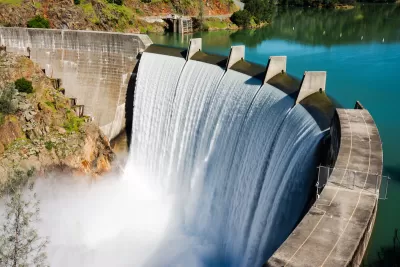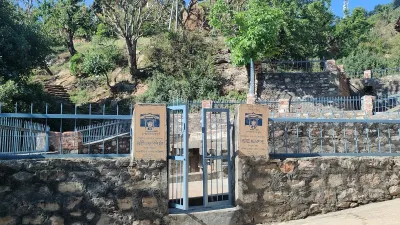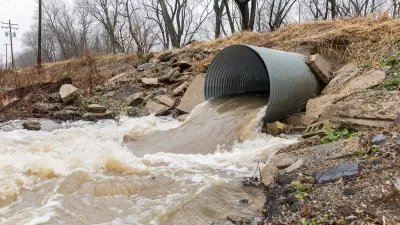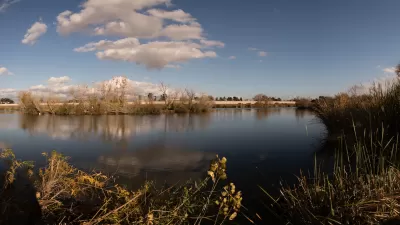A wet winter will replenish the state’s snowpack and reservoirs, but could also increase flooding and wildfire risk in some areas.

An update to California’s Water Plan provides a blueprint for upgrading the state’s water infrastructure to ensure sustainable water systems as the shifting climate brings longer droughts, stronger storms, and more unpredictable weather patterns.
According to an article for KQED by Ezra David Romero, “With climate change “an urgent threat,” the state’s sprawling plan, updated every five years, addresses three key areas: strengthening watersheds, addressing climate change and closing a gap in ‘long-standing inequities’ in water management.”
California’s recently released water conservation rules garnered criticism for relaxing some standards that could lead to smaller water savings. Abraham Mendoza of advocacy group Community Water Center says the plan does “not speak to solving the problem in a timely manner.”
This year, a wet winter replenished the state’s snowpack, which was down to 25 percent in January. “The heightened snowpack is also good news for staving off the threat of early-season wildfires” at high elevations. But the increased vegetation at lower elevations could also mean increased fire risk in those areas. According to UCLA climate scientist Daniel Swain, “All the water will allow “invasive grasses to fill in the gaps between sagebrush and Joshua trees,” which ‘may increase the likelihood of fires in the deserts earlier in the season.’”
FULL STORY: California Snowpack: Gov. Newsom Unveils Water Plan for a Climate-Changed Future

Planetizen Federal Action Tracker
A weekly monitor of how Trump’s orders and actions are impacting planners and planning in America.

Restaurant Patios Were a Pandemic Win — Why Were They so Hard to Keep?
Social distancing requirements and changes in travel patterns prompted cities to pilot new uses for street and sidewalk space. Then it got complicated.

Map: Where Senate Republicans Want to Sell Your Public Lands
For public land advocates, the Senate Republicans’ proposal to sell millions of acres of public land in the West is “the biggest fight of their careers.”

Maui's Vacation Rental Debate Turns Ugly
Verbal attacks, misinformation campaigns and fistfights plague a high-stakes debate to convert thousands of vacation rentals into long-term housing.

San Francisco Suspends Traffic Calming Amidst Record Deaths
Citing “a challenging fiscal landscape,” the city will cease the program on the heels of 42 traffic deaths, including 24 pedestrians.

California Homeless Arrests, Citations Spike After Ruling
An investigation reveals that anti-homeless actions increased up to 500% after Grants Pass v. Johnson — even in cities claiming no policy change.
Urban Design for Planners 1: Software Tools
This six-course series explores essential urban design concepts using open source software and equips planners with the tools they need to participate fully in the urban design process.
Planning for Universal Design
Learn the tools for implementing Universal Design in planning regulations.
Heyer Gruel & Associates PA
JM Goldson LLC
Custer County Colorado
City of Camden Redevelopment Agency
City of Astoria
Transportation Research & Education Center (TREC) at Portland State University
Camden Redevelopment Agency
City of Claremont
Municipality of Princeton (NJ)





























